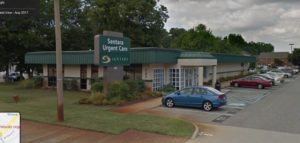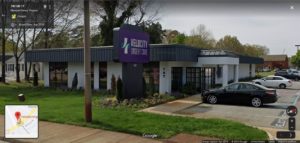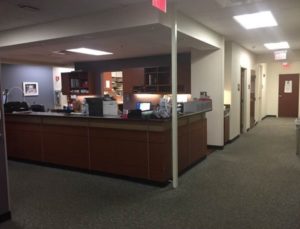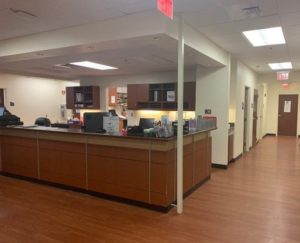Alan A. Ayers, MBA, MAcc is Chief Executive Officer of Velocity Urgent Care and is Practice Management Editor of The Journal of Urgent Care Medicine.
Urgent message: As the overall appearance of an urgent care facility remains a competitive differentiator and a key to patient satisfaction, operators must allocate the necessary resources to ensure the appealing exteriors and pristine interiors that drive positive patient experiences.
It’s common knowledge that when it comes to walk-in healthcare, the physical environment is one of the most important factors in determining patient perceptions of their quality of care. Numerous studies and surveys confirm that the cleanliness, attractiveness, and aesthetic pleasantness of an urgent care center has positive correlations to reduced anxiety, perceived shortening of wait times, pleasantness of staff interactions, and willingness to recommend the center through positive word of mouth. This is due in part to patients generally lacking the knowledge to discern the clinical quality of their encounter, and therefore assuming appearance to be the closest proxy. After all, a “good” doctor wouldn’t work in a “dump!”
In light of this observation and given that many centers are approaching the age at which they’re due for a “facelift,” urgent care operators should commit to carefully evaluating the physical appearance of both the exterior and interior of their centers and commencing a renovation if needed. Remember, urgent care is retail in nature, and retail is detail.
To that end, here are several areas of consideration for renovating and updating of your center.
Upgrade the Curb Appeal
When a patient pulls up to your center, their very first impression should be of an exterior that’s aesthetically pleasing, welcoming, and inviting. Consider the following:
- Is your signage prominent and well-lit, or does it need to be updated? Are walkways clear and shrubbery/landscaping well-maintained? Are glass windows and doors clean and clear?
- Is the parking lot free of litter? Do parking areas have fresh asphalt sealing and striping?
- Are directional and parking signs free of rust and in good repair?
- Is the exterior lighting operational and does it provide adequate light for evenings and nighttime? Would upgrading to LED lighting brighten exterior signage and make your center more visible to passing traffic?
Exhibit 1.

Exhibit 1: For less than $25,000, new signage, a new coat of exterior paint, and new landscaping dramatically improved the curb appeal of Velocity Urgent Care (a partnership with Sentara Healthcare) in Newport News, VA. This legacy site now boasts a much more contemporary appearance, which has contributed to growth in patient volumes.

Evaluate the Interior
Signs of “center fatigue” have shown to negatively impact patient perceptions, especially in online reviews. To ensure that your interior is welcoming and professional-looking, consider the following scope of renovations:
- Evaluate the wear and tear on all furnishings, fixtures, and equipment. Re-upholster chairs and exam tables if they’re showing age. Replace damaged or dated equipment.
- Pay close attention to aesthetics, colors, and styles. “Pea Green” and “Chocolate,” for instance, may have been trendy colors a decade ago when the center first opened, but now they look outdated. It’s important to have a clean, fresh appearance, including artwork. Art prints that may have gone out of style can easily be replaced with photos of local scenes of the community. You can easily order canvass prints of your own or purchased photos online.
- Do a thorough inventory of unused, depreciated, or damaged furnishings, fixtures, and equipment. There should be no visible equipment with Do Not Use or Out of Order labels. Most urgent care centers have at least one exam room or closet where junk has accumulated. Ask yourself, “What are the future plans for this equipment?” That chair with the broken caster, for example: Are you going to send it out to have the wheel welded back on? If not, discard it. Even better, repair it then donate it to a local or international organization that provides healthcare services for the needy; they would certainly welcome the extra equipment.
- Upgrade the interior lighting. Newer LED lighting is bright, inexpensive, can be easily plugged into existing sockets, and can positively change the mood of an entire room.
Exhibit 2.

Again, for less than $25,000, Velocity Urgent Care in Williamsburg, VA replaced dated wallpaper and trim colors with freshly painted walls and new artwork. They also replaced worn and stained carpet tiles with a faux hardwood plank in the back office and exam rooms. The result: a much brighter, welcoming environment for both patients and team members.

Employ a Facility Checklist
Having a thorough facility checklist for your center can help you pinpoint which areas need renovation and attention, as well as guarantee that your center meets patient expectations for cleanliness and organization. Whether you develop it yourself or download it from a trusted source such as the Urgent Care Association, a facility checklist is an invaluable resource for keeping your center in top shape. A facility checklist would include some of the following categories:
- Exterior signage
- Parking lot
- Landscaping
- Entry/façade
- Front office, registration, and discharge counters
- Waiting/lobby areas
- Restrooms
- Laboratory
- Exam rooms
- Supply/janitorial/equipment closets
Promote Your Renovations to the Community
A basic renovation that encompasses the flooring, paint, and, say, a tile refresh should cost less than $25,000 assuming a conservative scope. Once renovations are finished, consider getting the word out by doing a PR launch or even a grand reopening of the center. This will convey a sense of “freshness” and “newness” around your center and generate buzz that can attract new patients. Use social media, online advertisements, or hire someone to create a press release to be distributed to the local media. The grand opening should feature things like temporary signage and sail flags to attract attention outside, along with a promotion or bonus like complementary flu vaccinations, for example, to generate inquiries and foot traffic.
Hawthorne Effect
Anyone who’s taken a course in Psychology 101 is probably familiar with the early 20th century experiments at the Western Electric Hawthorne Plant in Illinois, in which positive changes to the work environment were accompanied by increases in worker productivity. Specifically, researchers found that improvements in lighting, maintaining clean workstations, clearing floors of obstacles, and even relocating workstations resulted in increased productivity for a period of time shortly thereafter. While an increase in morale and productivity is not guaranteed to follow a renovation to your center, anecdote indicates that employees will be refreshed and energized by the changes.
Conclusion
Renovating your urgent care center isn’t simply a vanity project; a well-maintained, updated facility will generate a positive return on investment in existing patient loyalty and new patient traffic. In short, the positive feedback your center will garner by both word of mouth and online reviews is a competitive differentiator, and a key factor in your center’s success.

